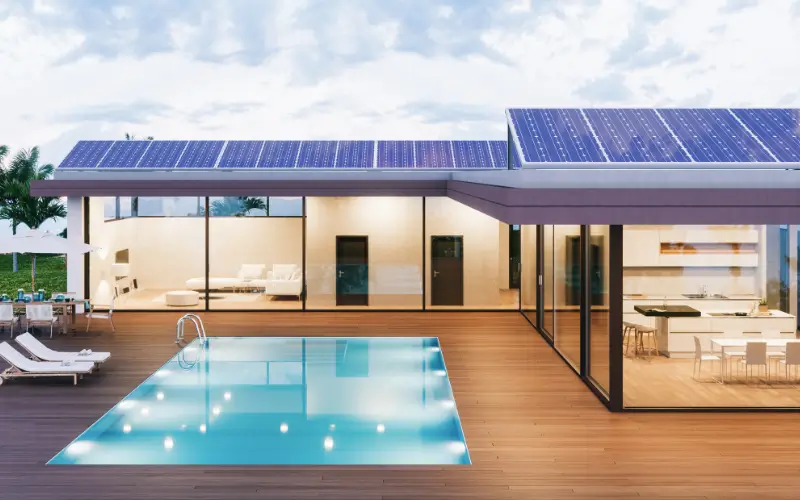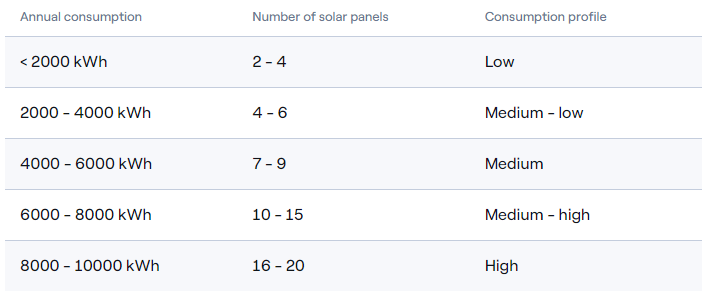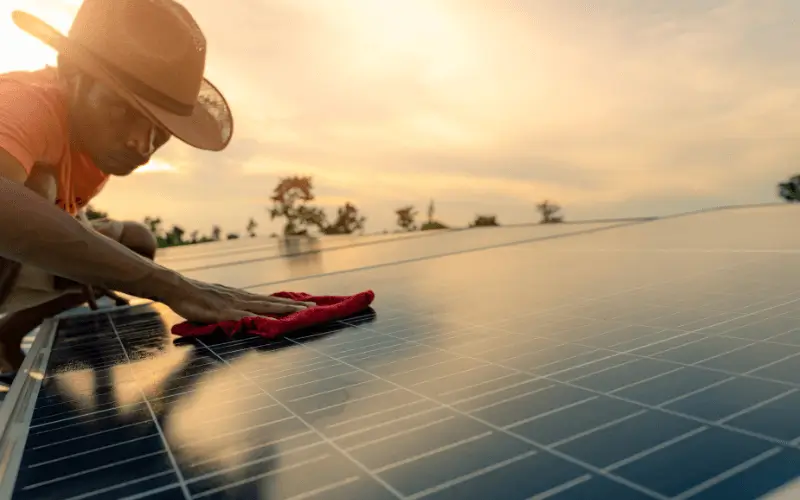
A Guide To Installing Solar Panels In Spain
Expat Tips
Published: 07 September 2022 13:48 CET
Updated: 19 May 2025 13:48 CET
With over 300 days of glorious sunshine each year, Spain is the obvious choice for those looking to install solar panels in their homes.
Furthermore, with energy bills continuing to rise in 2025, and variable pricing placing pressure on household budgets, there's even more incentive for homeowners to explore cost-effective, sustainable energy sources.
This comprehensive guide will walk you through the key facts about installing solar panels in Spain, including system types, legal requirements, grants, maintenance tips, and what happens when you eventually sell the property.
How do solar panels work?
Solar panels use photovoltaic (PV) cells to absorb sunlight and convert it into direct current (DC). An inverter then transforms this DC electricity into alternating current (AC), which powers your home’s appliances and devices. Surplus energy can either be fed back into the grid for compensation or stored in a battery if your system includes one.
The efficiency of your system depends on the quality of the panels, their positioning, roof angle, and how much sunlight your area receives throughout the year.
Why use solar panels?
Solar power allows you to reduce dependency on your utility provider, lower your energy bills, and reduce your carbon footprint. In 2025, with global energy markets still unstable, many Spanish homeowners see solar energy not only as an ecological investment but as a financial shield against price volatility. Solar technology has also matured significantly, offering better yields, smarter management apps, and longer-lasting equipment.

What are the types of solar panel systems?
There are three main installation options in Spain:
- On-grid (grid-tied): The most common system. You stay connected to the utility grid, use solar energy during daylight, and draw power from the grid at night. Excess power is sent back to the grid and compensated through net metering.
- Off-grid: These setups function completely independently of the public grid. You'll need a battery storage system to store excess energy for nighttime or cloudy-day use. Ideal for rural or remote homes, but more expensive upfront.
- Hybrid systems: A combination of on-grid and battery storage. You can store excess energy and still access the grid if necessary. These systems provide greater energy independence while still qualifying for grid compensation.
In 2025, hybrid systems are gaining popularity as battery prices fall and energy self-sufficiency becomes more desirable.
Why is Spain the ideal location for solar energy?
Spain has some of the highest solar irradiation levels in Europe, particularly in the south and east. Even in the winter months, most regions receive enough sunlight to generate significant amounts of electricity. This makes solar a viable year-round option. With grid electricity prices fluctuating and more people seeking eco-responsible solutions, solar panels have become one of the smartest long-term investments for homeowners.
Is there a solar tax in Spain?
No. The infamous “sun tax” (impuesto al sol) was officially abolished in 2019. Today, self-consumption is legally encouraged, and homeowners who generate excess energy can benefit from simplified compensation from the grid. The current laws also allow collective self-consumption, making it easier for communities of neighbours or apartment buildings to install shared systems.
Installation costs in 2025
Here’s a breakdown of average costs in 2025, inclusive of VAT:
- 2.5KW On-grid: €4,200–€4,800
- 5KW On-grid: €6,000–€6,800
- 8KW Hybrid (with battery): €10,500–€12,000
- 10KW Off-grid with full storage: €13,500–€15,500
Many local installers now offer maintenance packages and 10+ year financing options. It’s also worth checking for group-buying schemes in your region, which can drive down the per-watt cost by bundling multiple local installs.
How many panels do I need?
The number of panels depends on your home size and energy consumption. The average Spanish household consumes about 5,300 kWh annually, which typically requires 7 to 9 high-efficiency panels. A standard panel now produces between 350W and 400W.

Image Credit: Endesa
Also check our guide to saving money on electricity in Spain.
Do you need planning permission?
Most Spanish regions have simplified the process and no longer require formal planning permission. Fast-track installation is available in:
Andalucía, Aragón, Balearic Islands, Canary Islands, Catalonia, Castilla y León, Castilla-La Mancha, Extremadura, Galicia, Madrid, Navarre, and the Valencian Community.
If your property is part of a community or on an urbanisation, you may still need approval from the comunidad de propietarios (owners’ association). Always check with your local town hall.
What permits and certificates are needed from the installer?
By law, your installer must provide:
- A boletín eléctrico (electrical installation certificate)
- Registration with the Registro de Autoconsumo (self-consumption registry)
- Technical memory report or installation design plan
- CE-marked components and a certified inverter
- End-user training or app access for system monitoring
In many regions, they must also handle the DSO (Distribuidora) paperwork so you can receive grid compensation for excess energy.
How long do solar panels last and what maintenance is needed?
Solar panels generally last 25–30 years with minimal loss in efficiency. Most manufacturers offer 20 to 25-year performance warranties. Modern panels degrade at around 0.5% per year.
Maintenance includes:
- Cleaning 2–4 times per year (especially in dry/dusty areas)
- Checking the inverter and app-based system logs monthly
- Occasional inspection of mounts and cables

How much can I save?
Example: A household of four in a 120m² home using 6,000 kWh/year could save:
- €1,650–€1,800 annually with an on-grid or hybrid system
- Over €9,000 in five years
Even partial systems offsetting 50% of energy usage can save €700–€1,000 per year, depending on your region’s solar exposure and your utility provider’s rate.
How long until the system pays for itself?
On average, homeowners recover their initial investment in:
- 5–7 years for on-grid or hybrid systems
- 8–10 years for larger off-grid setups
Once paid off, you're essentially generating free electricity for the rest of the panel’s lifetime.
Are there still grants in 2025?
National grants under Royal Decree 477/2021 ended in 2023, but many autonomous communities now run their own solar support schemes. Examples:
- Andalucía: Up to €3,000 in subsidies via Agencia Andaluza de la Energía
- Valencia: Rebates of up to 40% of system costs under the PREE 5000 program
- Murcia: IBI property tax discounts for certified solar installations
Check IDAE’s grant portal and your local energy agency for current offers.
What happens if you sell your home with solar panels?
Having solar installed can increase your property’s value and appeal to eco-conscious buyers. In most cases, the solar system is transferred to the new owner without complication. Make sure you:
- Provide the buyer with system documentation and warranties
- Transfer monitoring app credentials
- Notify the regional energy registry if required
If your system is under financing or lease, check the terms — most providers allow transfers.



















